Eclipse 550 Standard Features
All of the below features come standard with your Eclipse 550 purchase:
Dual (Redundant) Avio IFMS Avionics
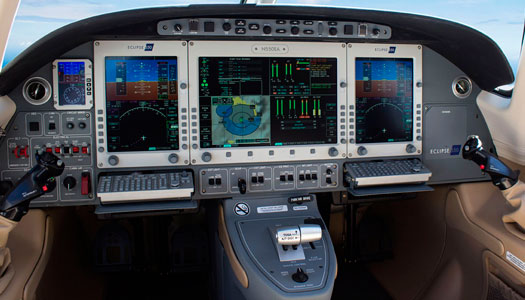
The Dual Integrated Flight Management Systems (IFMS) in the Eclipse 550 offers a superior navigation solution for en-route, terminal, and precision approach capabilities. The Eclipse IFMS promotes situational awareness by providing simple, instinctive, yet highly advanced flight planning with quick and easy access to flight path, aircraft position, and weather on moving maps and geo-referenced electronic charts.
5-Year Factory Warranty

The Eclipse 550 comes standard with a 5-year warranty covering all aircraft components (excluding consumables). Eclipse Aerospace offers an industry leading Factory Warranty on all new Eclipse 550 Jets for 60 months or 1,000 hours. The Eclipse 550 airframe is warrantied for 10 years or 5,000 flight hours. In addition, Pratt and Whitney Canada (P&WC) warranties the engines for 3 years or 1,000 flight hours.
Flight Into Known Icing (FIKI)
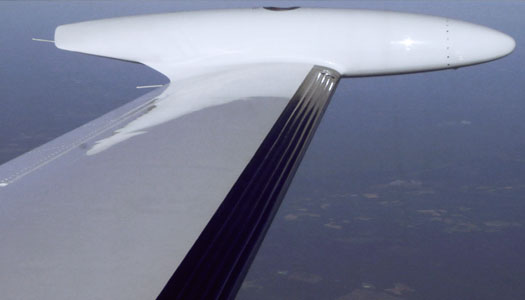
Every Eclipse Jet comes with the ability to fly into known icing conditions. The 550's pneumatic de-icing boots will remove ice buildup from the wings as you move through the weather on the way to your destination.
Anti-Skid Braking System

The electronically activated Anti-Skid Brake system in the Eclipse 550 allows for maximum braking energy and skid control. Testing has shown the Anti-Skid Braking system to stop an aircraft at normal landing speeds in approximately 700 feet. The fact that this system is electronically activated translates into savings in both operational costs and overall aircraft weight when compared to other systems.
Standby Display Unit
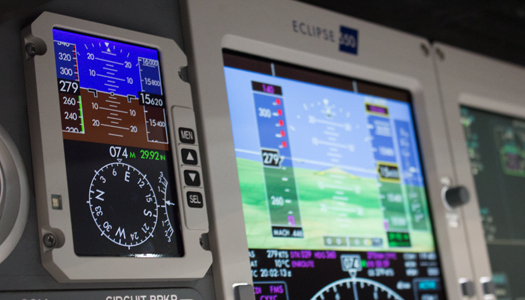
The Eclipse 550 includes triple redundant sources for air data, attitude, and heading. The third sources of this information in the Eclipse 550 are located on a standby display unit to the left side of the pilot's PFD (optionally an additional SDU on the copilot's side). Moving this standby data to a dedicated display increases redundancy while allowing for more display options on the MFD.
ADS-B Out

The Automatic Dependent Surveillance – Broadcast Out system on the Eclipse 550 meets the FAA NexGen requirement for every aircraft by 2020. The ADS-B Out systems integrates into Avio for data such as aircraft identification, airspeed, altitude, heading, and location, and sends out a signal for use by controllers and other aircraft, assisting with traffic awareness and collision avoidance.
Eclipse 550 Optional Features
All of the below features can be added to customize your Eclipse 550:
Auto Throttles
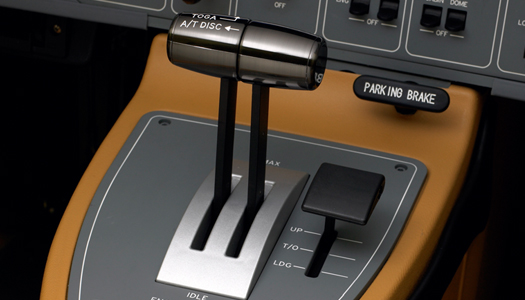
With the Eclipse 550 Jet, the pilot may couple the throttles to the auto flight system to control the aircraft's speed. The pilot will select the appropriate airspeed for the autothrottle system to maintain, and servos in the throttles will physically adjust the thrust lever angle to the appropriate power setting.
ADF / DME

The traditional Automatic Direction Finder automatically displays the relative bearing from the aircraft to a non-directional beacon. Distance Measuring Equipment on the Eclipse 550 provides Global Positioning System based distance to station.
Color Weather Radar

The Eclipse 550 offers on board Honeywell RDR-2000 sweeping radar that can be tilted up and down to indicate the size, shape, and intensity of precipitation. This information is overlaid on the Horizontal Situation Indicator on the PFDs along with the flight plan route allowing the pilot to execute tactical weather avoidance.
Iridium Phone

You don't have to worry about being out of touch in-flight. Just use your new iridium phone to place a call from the air. The Iridium Satellite connection may also be used to send burst data including engine trend monitoring directly to Pratt & Whitney Canada.
Part 135 Package
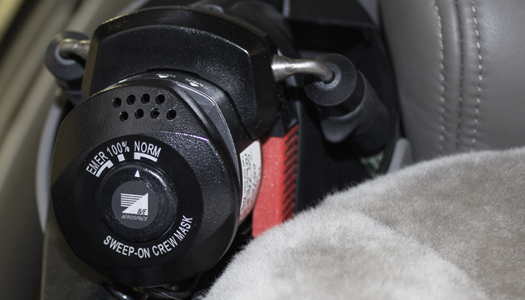
This includes the required items to operate the aircraft as part of a FAA Part 135 operation for charter. Primarily, these include such items as an additional quick donning oxygen mask for the co-pilot side, and an upgraded 40 cubic foot oxygen bottle, and a second keyboard.
Stormscope
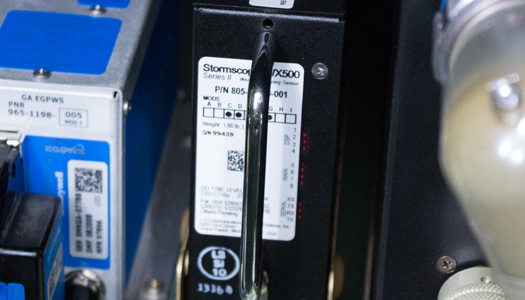
The BF Goodrich WX-500 Stormscope detects lightning in storm cells and allows the pilot to avoid areas of high convective activity by overlaying lightning strikes on the PFD. When used in conjunction with the onboard radar, it allows the pilot to maintain a safe distance from convective activity.
TAS / Skywatch
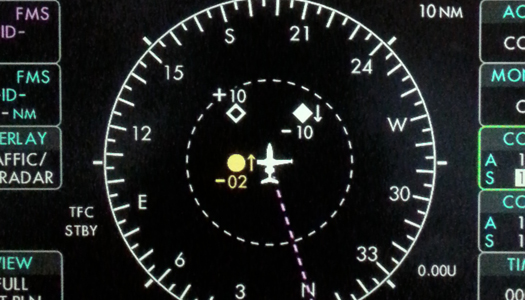
The L-3 Avionics Skywatch HP system is integrated into the Primary Flight Displays to provide Traffic Advisories in relation to your flight plan. The information presented includes range, bearing, relative altitude, and altitude trend, as well audible Traffic Alerts of other aircraft in the vicinity in order to avoid mid-air collisions.
TAWS
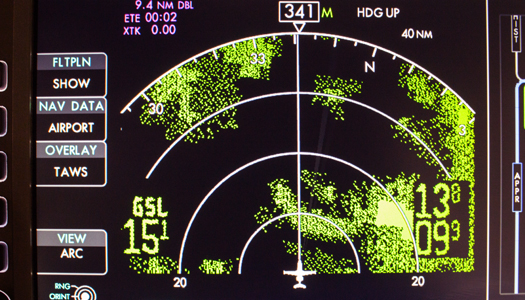
The Bendix/King KGP560 Terrain Awareness Warning System (TAWS) increases the pilot's situational awareness with visual reference to terrain as well as using aural warnings and commands. TAWS provides data and warnings to the pilot regarding the aircraft's altitude relative to the proximity of natural and man-made obstacles.
Eclipse 550 Systems
Avio Processing Center

The Avio Processing Center, or APC, is the electronic heart of the aircraft. In it, the Aircraft Computer System (ACS) continuously monitors and controls the aircraft systems such as flaps, landing gear, climate control, fuel management, autopilot, and flight envelope protection. In addition, the ACS alerts the pilot, when necessary, to abnormal system conditions.
Also contained in the APC are the Full Authority Digital Engine Control (FADEC) units. FADEC ensures the engines are always operating at peak performance and efficiency. That translates into maximum service life and minimum operating cost.
Together, the ACS and FADEC units significantly reduce pilot workload as compared to other jet aircraft. The aircraft has dual APCs for maximum reliability and operational safety. The redundant APCs are one of the primary reasons why the Eclipse 550 is so easy to fly single pilot.
Digital Electrical Power Distribution

As part of the total integration philosophy, the Eclipse 550 incorporates electronic circuit breaker (ECB) technology and computer controlled power distribution. Electrical power is automatically controlled and distributed by the Aircraft Computer System to five electrical busses. Safety critical systems and components are powered from multiple ECBs on separate buses. The ACS uses the ECBs as on/off switches reducing the need for relays and ECBs have stand-alone circuit protection properties.
The ACS automatically configures the electrical busses during operations like engine start to protect sensitive electrical components from the power transients from starting a turbine engine. The use of ECBs lower pilot workload in abnormal situations by automatically load shedding non-essential systems. ECBs are accessible through a dedicated synoptic page accessible on the MFD or either PFD. ECBs are logically grouped and their central location dramatically eases identification and control, as well as creating a clean cockpit devoid of the usual banks of mechanical circuit breakers.
Electro-Mechanical Landing Gear / Flaps
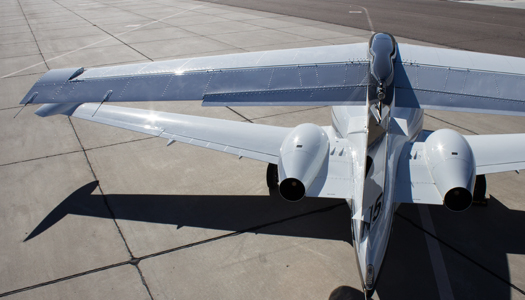
Jet aircraft landing gear and flap systems are traditionally operated by complex hydraulic systems. The Eclipse 550 uses digitally controlled electric actuators to extend and retract these systems.
Four flap actuators communicate with each other to coordinate flap movement and prevent an asymmetric flap deployment. By using electro-mechanical actuators in the landing gear, flaps, and many other systems, we've reduced weight and complexity. This change from the traditional helps to lower maintenance costs, increase systems integration, and increase fuel efficiency.
System Synoptic Displays
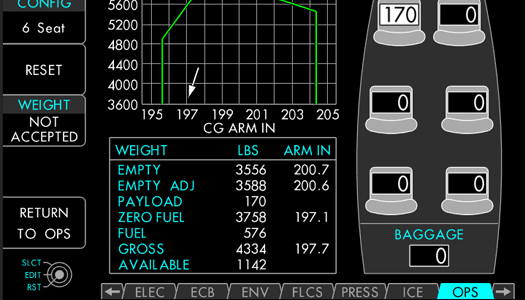
The Multi-function Display on the Eclipse Jet provides dedicated 'pages' to show graphical representations of each major aircraft system. These include engines, fuel, electrical power, ECBs, pressurization, climate control, ice protection, and weight and balance control. System synoptic pages are the pilot's interface to each aircraft system and give a clear indication of system status.


















